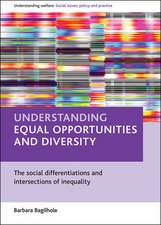Partnerships – Machines of possibility
Autor Niels Åkerstrøm Anderen Limba Engleză Hardback – 15 ian 2008
Everyone is talking about partnerships: environmental partnerships, social partnerships, public-private partnerships, partnerships between NGOs in Europe and the third world. How did partnerships come to emerge almost everywhere and at almost the same time? What is the inner logic of partnerships? And at what point does that logic begin to break down?In a highly complex society, the conditions on which agreements are built are constantly changing, demanding, first and foremost, that parties agree to reach an agreement. Partnering is an answer to the growing differentiation and dynamism of the societies in which we live. While this answer holds great potential, however, it is also very fragile. It is the aim of this book to improve our understanding of the shifting ground on which agreements must be reached in today's hyper-complex society.
Preț: 826.02 lei
Preț vechi: 1072.75 lei
-23% Nou
Puncte Express: 1239
Preț estimativ în valută:
158.05€ • 165.04$ • 130.52£
158.05€ • 165.04$ • 130.52£
Carte tipărită la comandă
Livrare economică 16-30 aprilie
Preluare comenzi: 021 569.72.76
Specificații
ISBN-13: 9781847420268
ISBN-10: 1847420265
Pagini: 176
Dimensiuni: 156 x 234 x 13 mm
Greutate: 0.39 kg
Editura: Bristol University Press
ISBN-10: 1847420265
Pagini: 176
Dimensiuni: 156 x 234 x 13 mm
Greutate: 0.39 kg
Editura: Bristol University Press
Recenzii
Niels Åkerstrøm Andersen has written what will long be regarded as the standard work for understanding the meaning, concept, theory, practice and analysis of partnerships. In addressing this topic which is central to contemporary societies and their organization, he confirms his position at the forefront on European social and political thought today. Mitchell Dean, Professor of Sociology, Macquarie University, Australia
Notă biografică
Niels Åkerstrøm Andersen, Department of Management, Politics and Philosophy, Copenhagen Business School
Cuprins
Introduction
Analytical strategy
Articulating partnerships; Outsourcing limits
Contracts and relationality
Contracts as communication
Partnerships as second-order contracts
Partnerships as tentative structural coupling
Partnerships as second-order organisations
Conclusion
Analytical strategy
Articulating partnerships; Outsourcing limits
Contracts and relationality
Contracts as communication
Partnerships as second-order contracts
Partnerships as tentative structural coupling
Partnerships as second-order organisations
Conclusion










